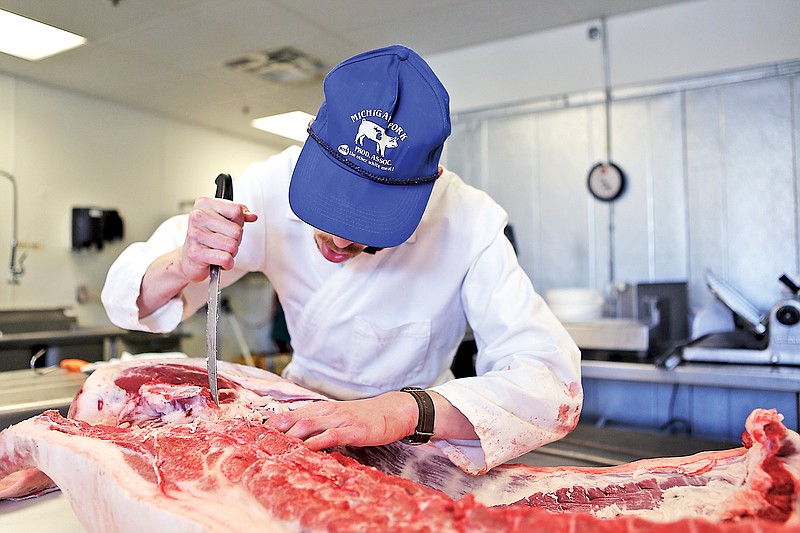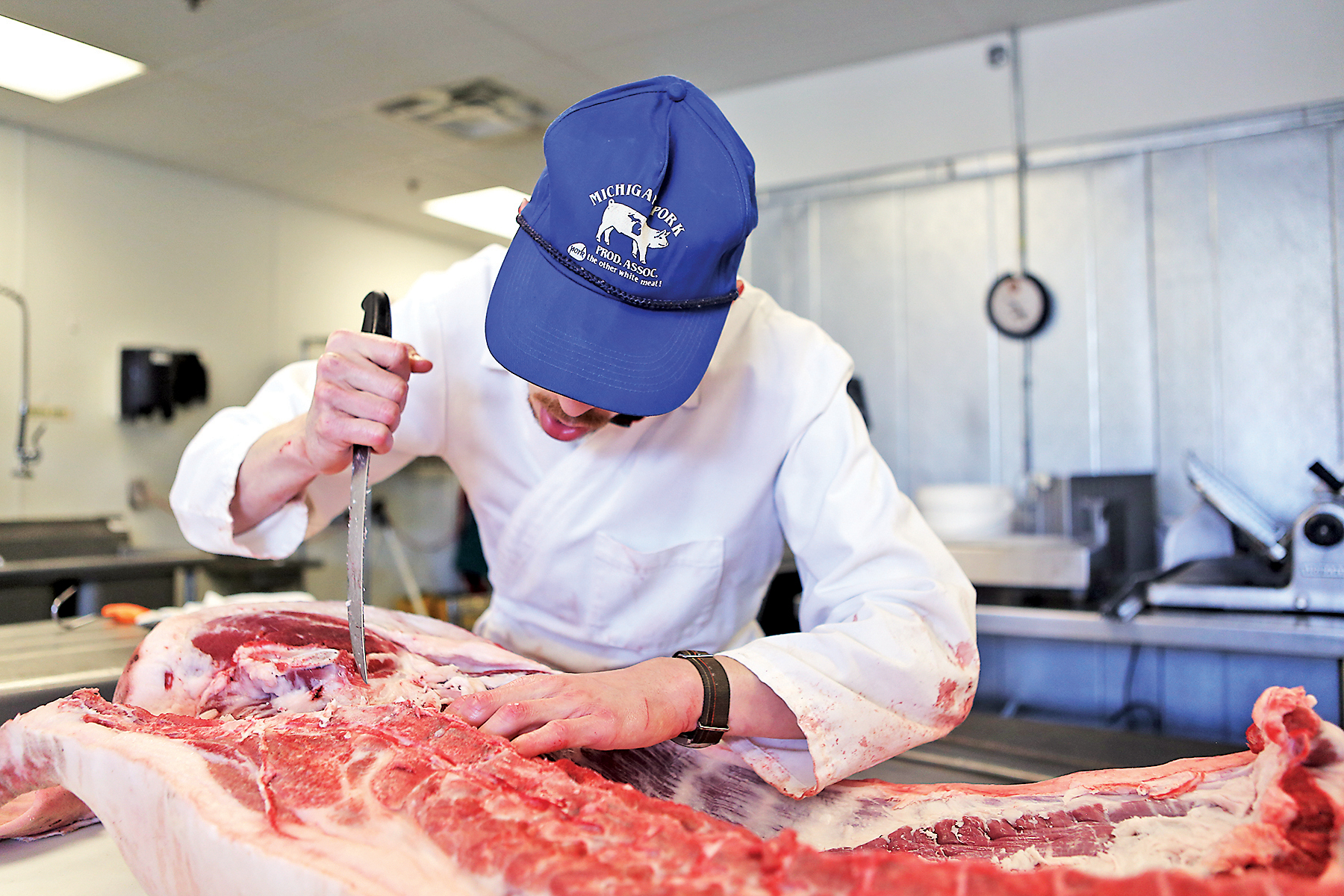There's barely any blood on the cutting counter. The table's crisp white plastic is like a spotlight amid all the aluminum trays and tables and walls. And half a pink pig, cut down his spine, is the star of the show.
There is some red splattered on Milton White's apron, but what he calls "the graphic part" is over. You're thinking of the slaughterhouse, he says.
"It's a pretty clean process," said White, head butcher at Main Street Meats. "Depending on the pig it can be kind of greasy or fatty on your hands, but other than that it's just cutting stuff."
This hog weighs 300 pounds. And Main Street Meats typically processes three whole pigs each week.
"That's pretty rare in this day and age where everything's coming in a box," White said.
Butchering from whole animals is about quality control. The old-school process uses as much of the animal as possible and makes for the freshest possible meat. The day before the glassy-eyed pig lay on the table at Main Street, it was roaming a farm in Morrison, Tenn.
"It's not been handled very much, it's not been cut the wrong way," White said. "That might be subjective, but it's important to me."
White wants to be certain that any cuts he puts in the case look exactly the way he likes.
"I cut it, I think it's right," he said, laughing. His royal-blue baseball cap reads "Michigan Pork" above an image of a smiling pig with a curled tail.
White says he's always been interested in food, but especially the mechanics of it.
To take something apart, you need to learn how it's put together. So White learned from a local butcher, from workshops and from books with lots of photos. He learned why one part is tough and another is tender. He learned animal anatomy and proper knife techniques. He learned exactly which muscles of the animals he should cut along.
"Nature's nice in that it gives you lines," White said. His knife plunges into another marbled section of flesh.
The pigs come to Main Street cut in half and scalded, which removes their hair, but with head, trotters and tails intact. From there, White quarters the animal to make sections that are more manageable to work with. From the pig's shoulder come picnic shoulders and ham hocks. From the middle section come chops, tenderloin and spare ribs. From the belly comes bacon, which is cured in-house. The lean trimmings and fat are mixed into sausage, also made in-house.
Each pig has only so many parts, so there are concessions to each cut White makes. Bone-in pork chops means no baby back ribs. His decisions come partly from customer requests and partly from butcher trend forecasting -- what sold last week? What holiday is it? What season is it? (Roasts sell best in the winter, pork chops move faster in the summer and bacon is in demand all year 'round.)
And every animal White cuts into was well-fed and well-treated on a local farm. He says that plays a large role in meat quality, too. And he believes there's truth to the phrase, "You are what you eat."
And so White's knife plunges down again and again. It's a rhythm. It's a meditation. And it's a bit of an art.
His favorite cuts are European-style -- they're not big squares of animal but rather single muscles White seams out individually. He recommends a Spanish cut called Presa, a shoulder muscle that he likens to a pork tenderloin roast with more flavor and character.
Those are more fun for him to cut anyway.
"Instead of just kind of cutting something into pieces with the saw," White says. "It's a lot more finesse and there's a lot more technique."
Photo Moment is a weekly column by the Times Free Press photo staff that explores the seldom-told stories of our region.


